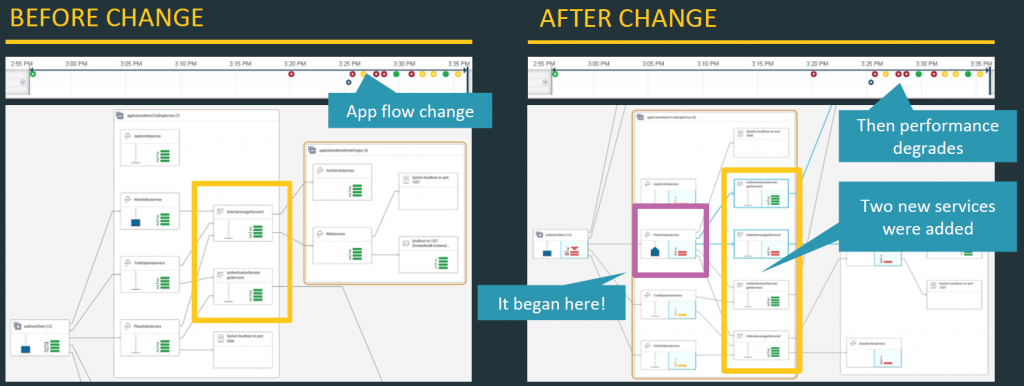Agile Operations for Enterprise DevOps Efforts
If you believe Gartner, IT is now bimodal. Slow, traditional IT continues its slog, following policies and procedures from the last century, while fast, digital, devops-driven technology efforts run circles around the old guard. Furthermore, Gartner says, this bimodal approach to IT is OK. Some things you want to do fast, but other things are best tackled slowly, like a pot roast.
If you listen to CA Technologies’ customers – as the folks at CA surely do – you’ll hear a different story altogether. True, traditional approaches to running an IT shop are slow, paperwork laden, and error prone. But even the most stubbornly traditional of CA’s extensive enterprise customer base realizes that change is afoot.
It’s time to move past bimodal IT and build agile operations in order to drive speed, scale, and quality across the entire IT environment, including infrastructure and applications. Customers demand no less.
CA’s Enhancements to DevOps Portfolio
Because of its inherently cross-organizational nature, devops provides opportunities for many vendors in different market niches, from development to testing to integration to deployment to operations.
Smaller vendors tend to slice this pie carefully, offering value to one part of the devops effort or another. Larger, established vendors like CA Technologies have no such luxury.
Their enterprise customers expect a breadth of capabilities from their offering – so when devops becomes a driving force for customer demand, CA must rise to the occasion.
CA’s devops portfolio shows its level of commitment to helping customers transform their existing IT organizations. This cross-cutting offering supports agile parallel development, continuous delivery, and agile operations – all essential technologies to the devops vision.
Now they are upping the ante with improvements to this product line. Enhanced monitoring solutions for Agile Operations provide the speed and scale organizations need to rapidly deploy new applications, monitor dynamic environments, and continually optimize application quality to ensure positive customer experiences.
CA is also rolling out new versions of its CA Application Performance Management (CA APM) and CA Unified Infrastructure Management (CA UIM) tools. Now CA customers can troubleshoot and triage all applications with CA APM and then correlate and combine quality of service metrics from CA UIM with CA APM performance metrics in a single screen with the new APM/UIM gateway. As a result, devops teams have an end-to-end view across applications and infrastructure.
The key features of CA APM are perspectives, timeline views, and differential analyses – all with innovative, patent pending technology.
Perspectives dynamically render topology maps of the application infrastructure, providing a “visual data mining” tool for drilling down into issues. Furthermore, APM Team Center offers role-based task perspectives, which are filters specific to individual roles within the IT organization.
Timeline views answer the “what changed” question. The tool flags any change in the environment and correlates it with the performance impact, even if the two events are separated in time.
CA APM Timeline View (Source: CA Technologies)
Differential analyses improve upon the traditional baselining that competing products offer. With baselining, a tool will gather information about normal operations for a period of time, in order to detect abnormal events. The problem with this approach is it tends to be black and white: either an event is normal or abnormal – resulting in potential alert storms of technically abnormal but relatively benign events.
CA APM, in contrast, looks at the severity, duration, and mission criticality of abnormal events and then reports on the trends of such events over time, affording customers more effective problem triage than tools that follow the traditional baseline approach can offer.
For its part, the updated CA UIM has improved its big data and microservices capabilities, with support for Hadoop®, Cassandra NoSQL and MongoDB environments, all from a single, unified console. Furthermore, customers can access these environments, together with other monitoring probes and integrations, from a new online marketplace.
The Intellyx Take
Both the CA APM and CA UIM tools are part of CA’s “Agile Operations” product line – a fine name to be sure, but what is really agile about agile operations? After all, plenty of other vendors use buzzwords like “agile” for marketing purposes without much product innovation to back up the terminology.
For CA, in contrast, the move to agile operations is fundamentally a new approach, as customers increasingly favor agility over assurance as the primary business driver for their investments in operational tooling.
Tools that deliver assurance focus on reliability and risk mitigation, expecting static, on-premise infrastructure, and internal IT processes that may take months to implement changes.
Tools that support business agility, however, focus on innovation and adapting to change. They expect dynamic infrastructure across on-premise and cloud environments, and instead of centering on internal IT processes, they connect to customer needs and customer-centric business metrics.
Switching from assurance-based tooling to agility-based tooling, therefore, is far more complex and difficult than a simple switch in marketing terminology. CA has been working on this transition for some time now, and the capabilities of the new versions of CA APM and CA UIM – and the devops portfolio overall – show that CA has the product innovation and ability to execute that their enterprise customers expect and deserve.
CA Technologies is an Intellyx client. Intellyx retains full editorial control over the content of this article.




